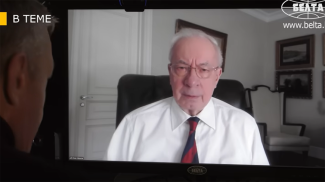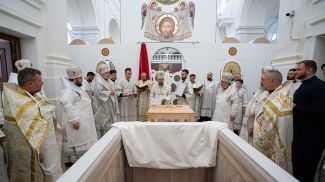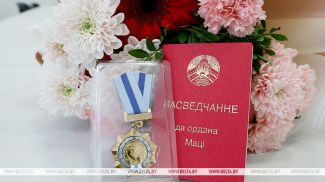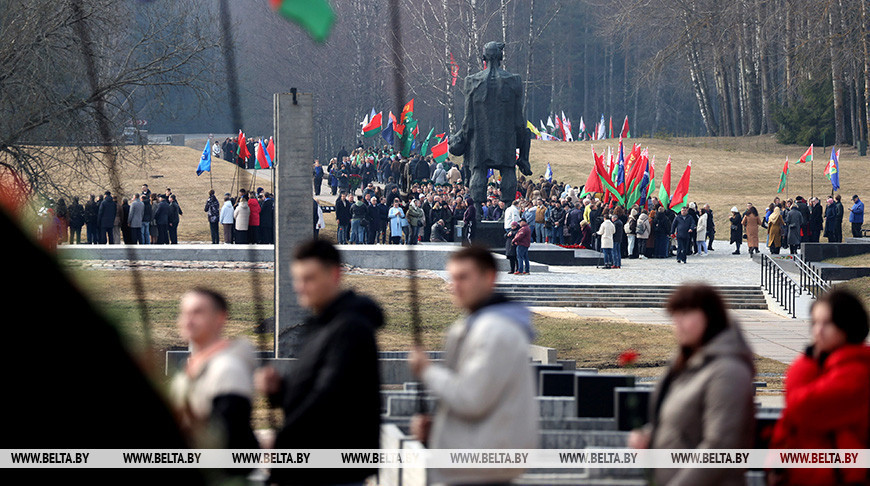
MINSK, 22 March (BelTA) - Today Belarus remembers the residents of the village of Khatyn which was burned down by the Nazis 81 years ago - on 22 March 1943. By remembering Khatyn, Belarusians remember thousands of other Belarusian villages destroyed by the Nazi invaders during the Great Patriotic War.
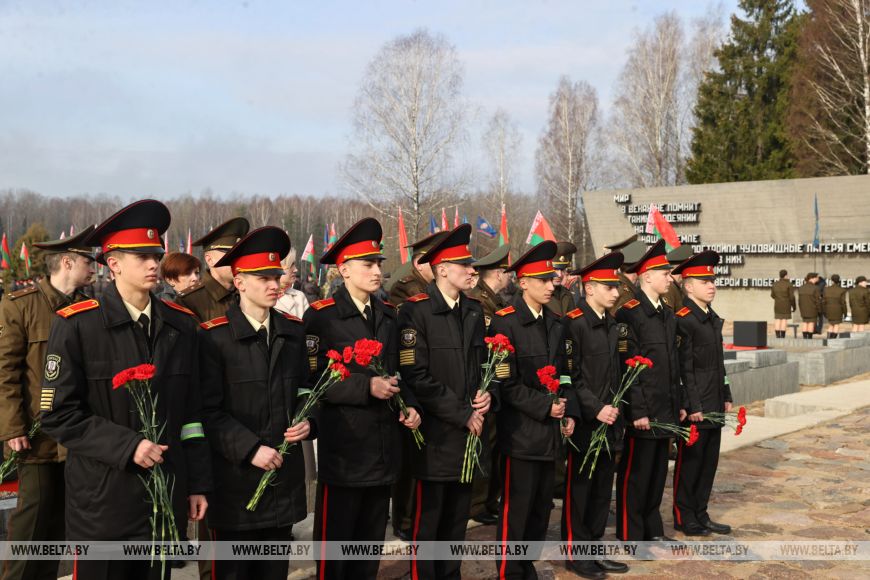
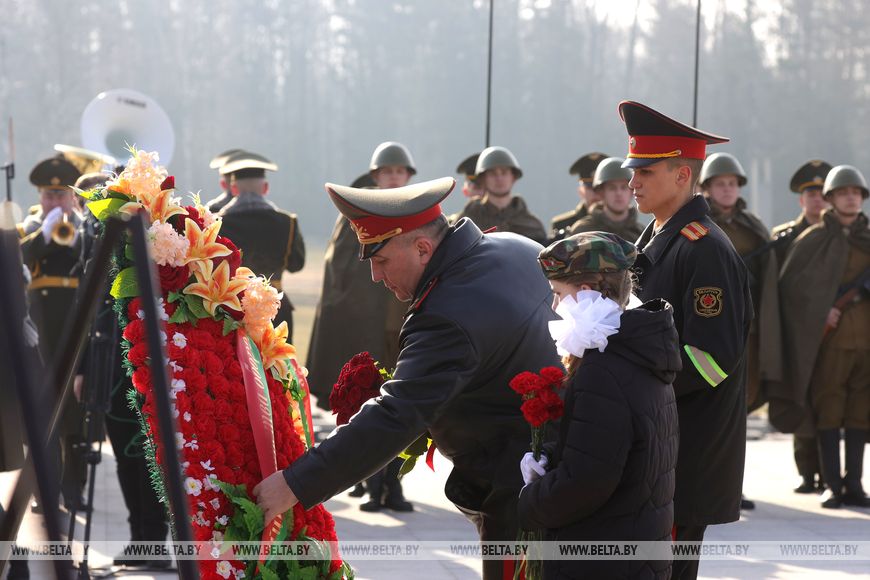
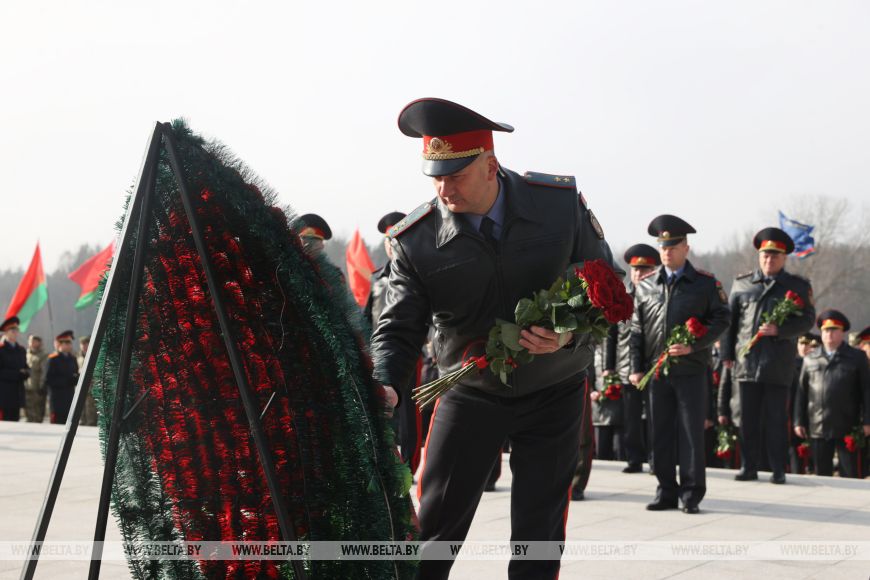
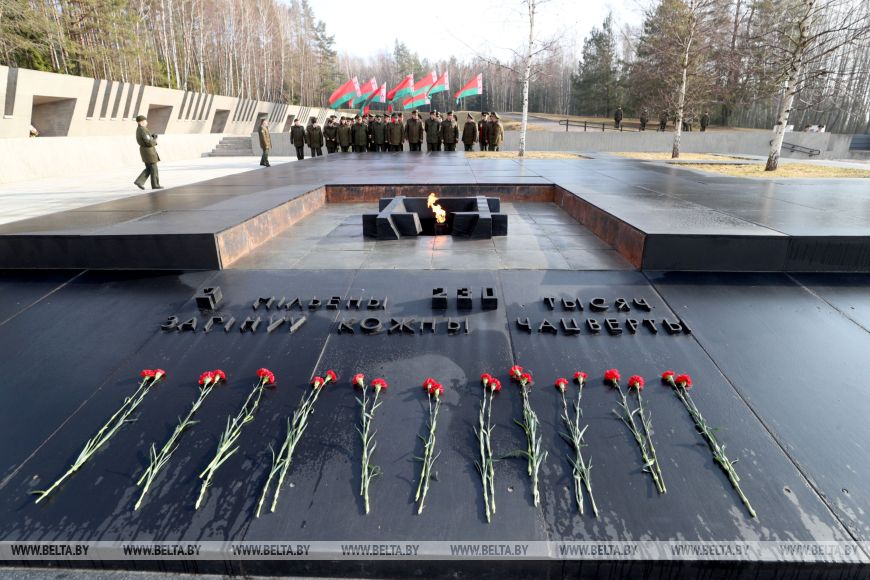
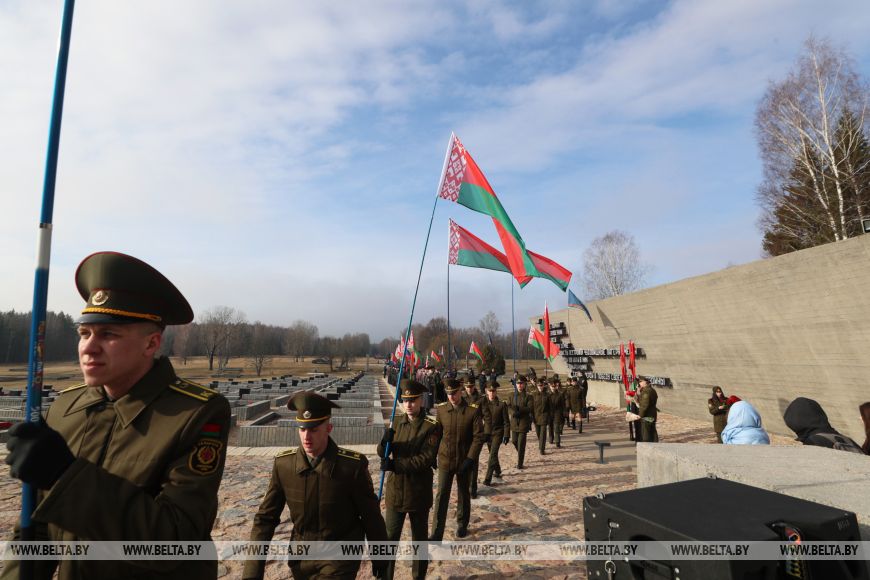
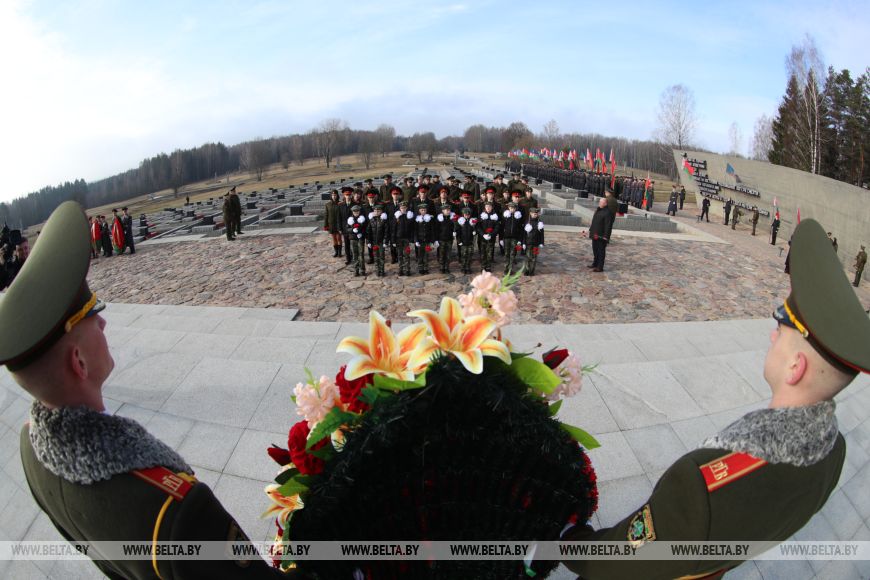
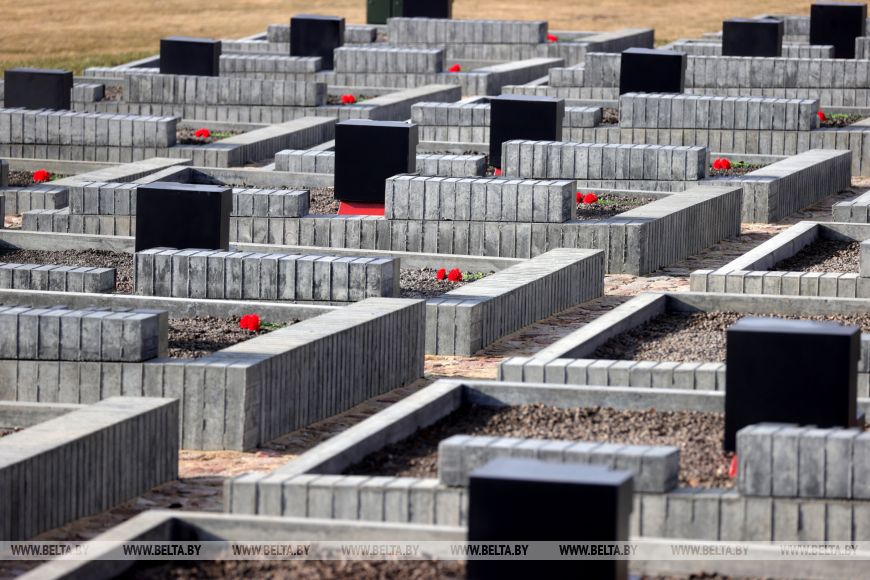
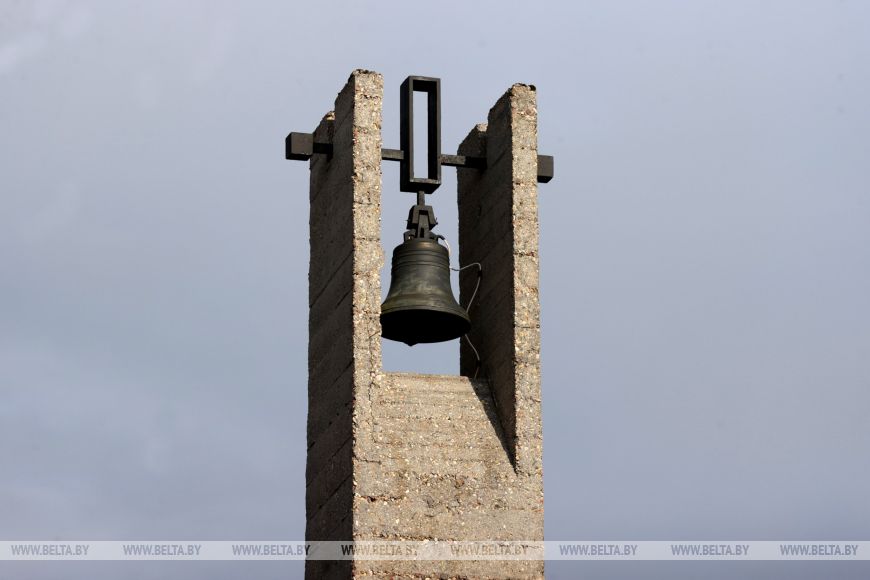
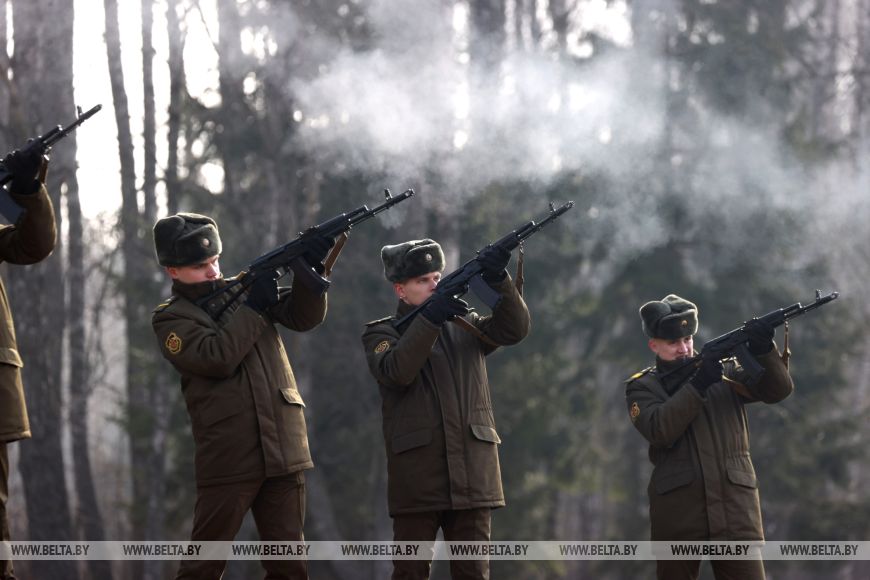
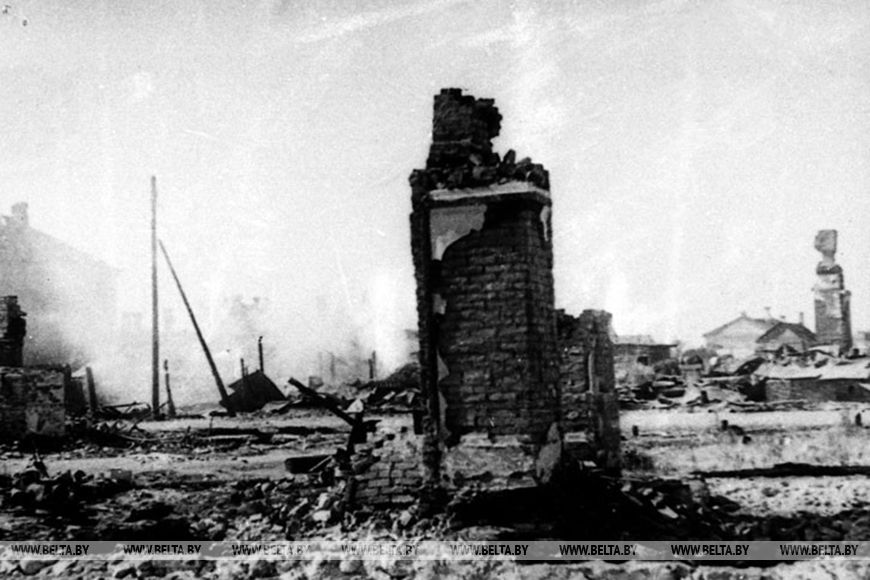
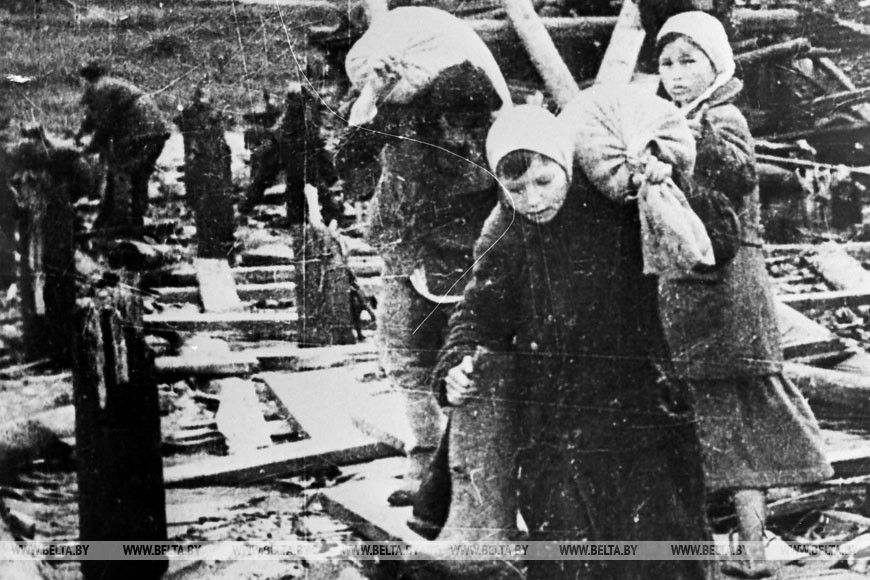
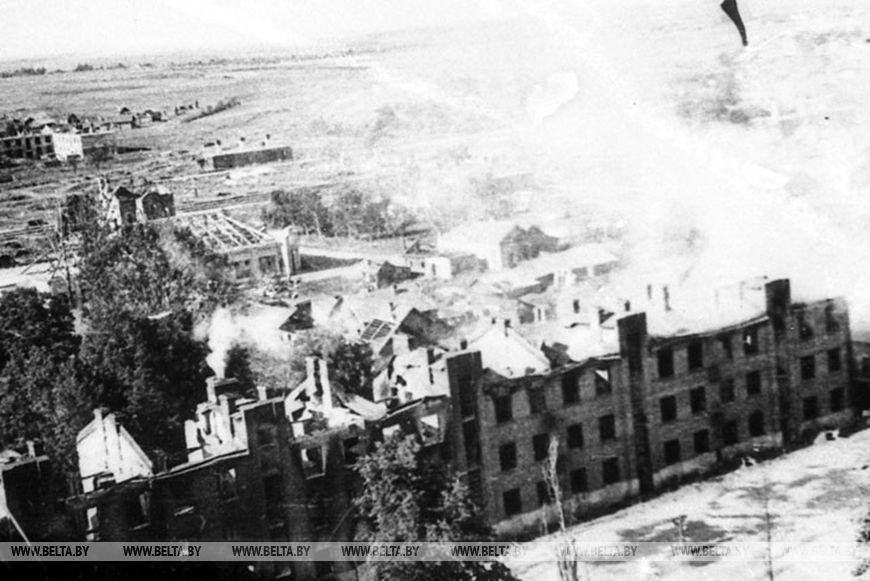
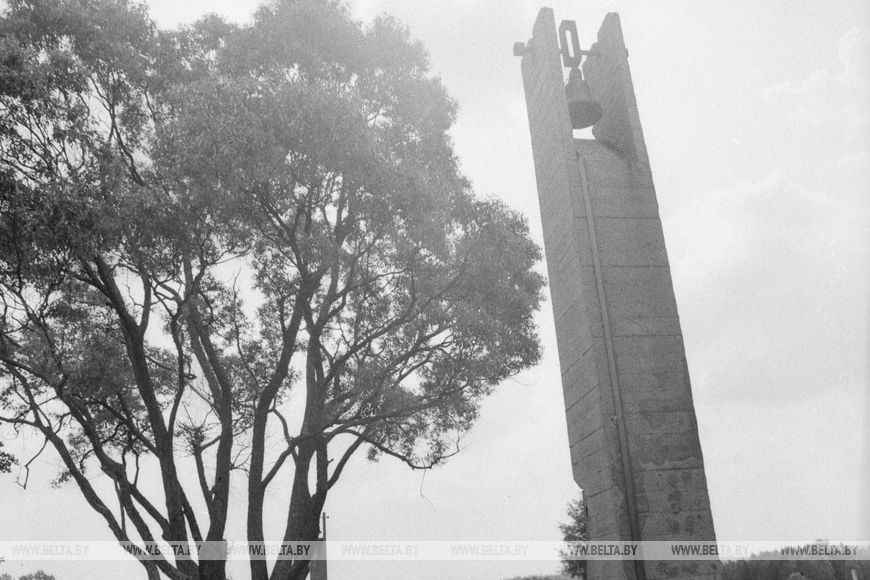
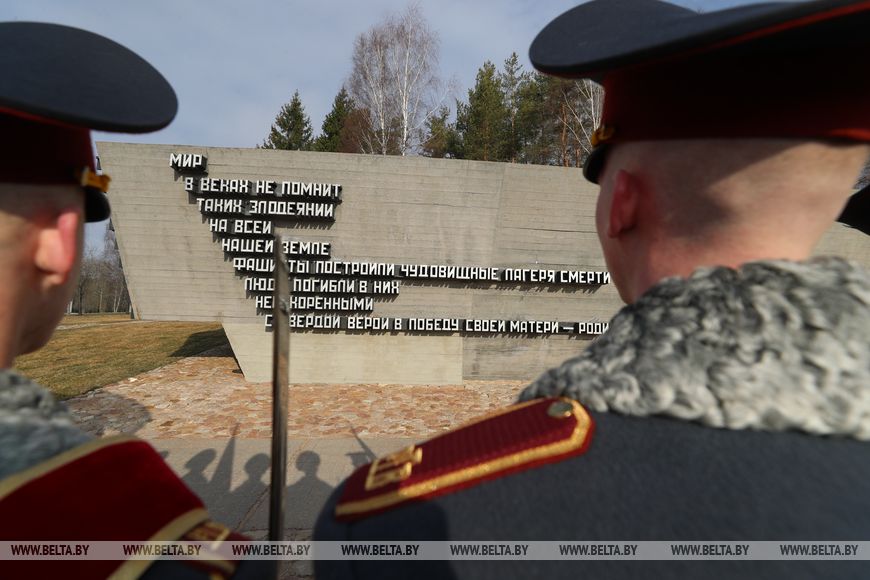
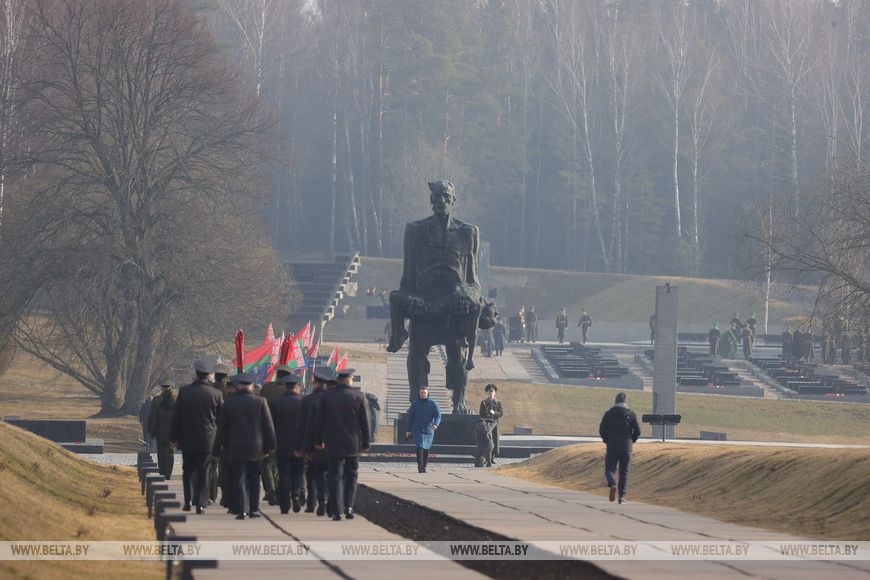
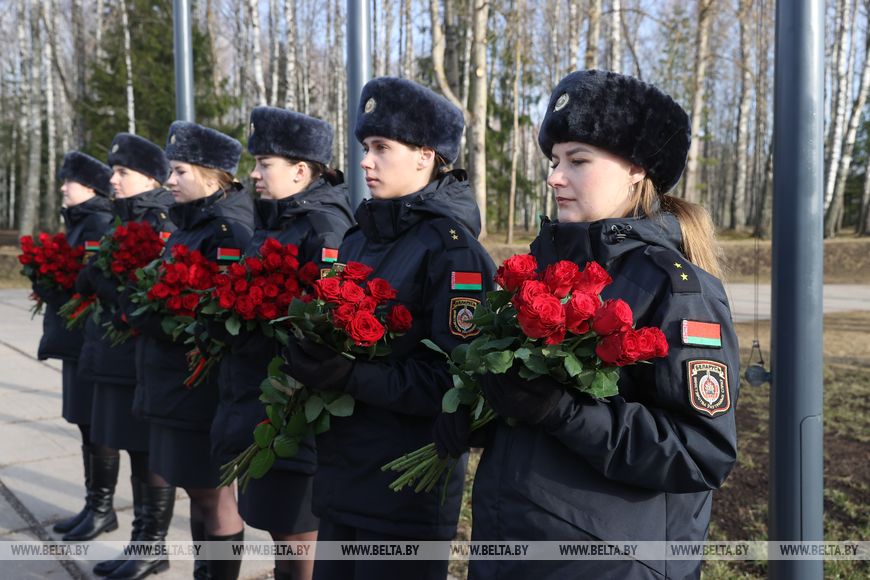
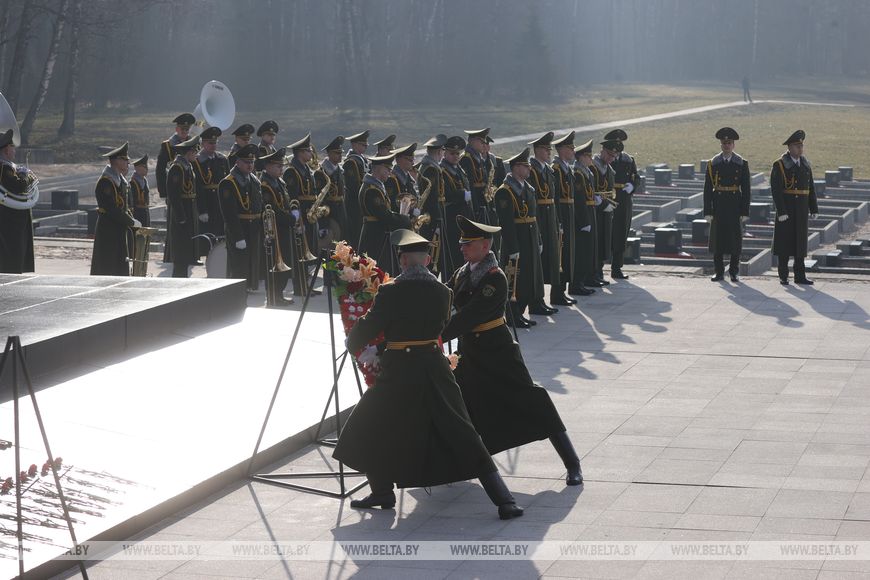
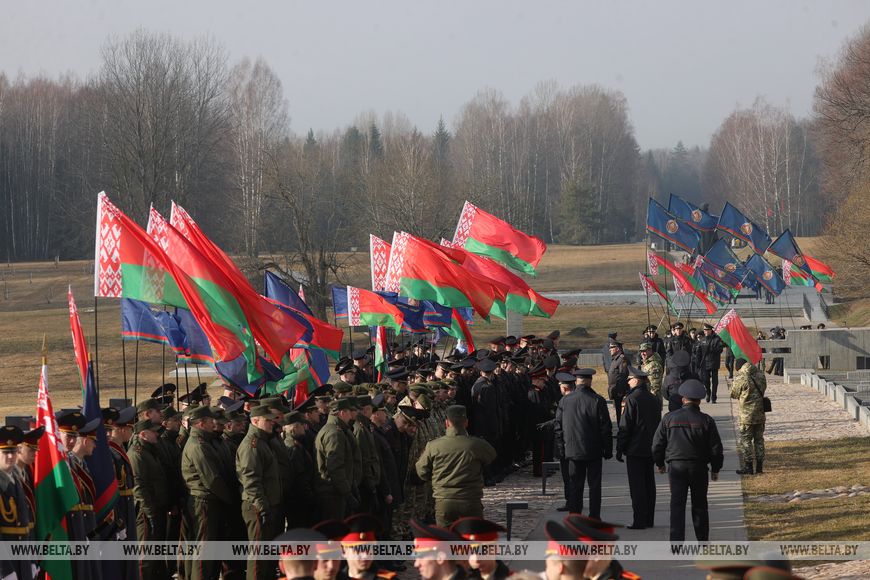
A memorial complex Khatyn was built on the site of the village to commemorate the victims. The decision to build the memorial was made in 1966. The grand opening ceremony was held on 5 July 1969. Thematically, the Khatyn memorial consists of several parts, but has a single compositional center that repeats the layout of the former village. In the center there is a bronze sculpture Unconquered Man. Next to it there is the symbolic roof of the barn in which people were burned alive. On the mass grave there is The Crown of Memory. On the site of each of the 26 burned houses there is a log monument with an obelisk in the form of a chimney with a memorial plaque listing the names of the residents of the house. The obelisks are topped with bells.
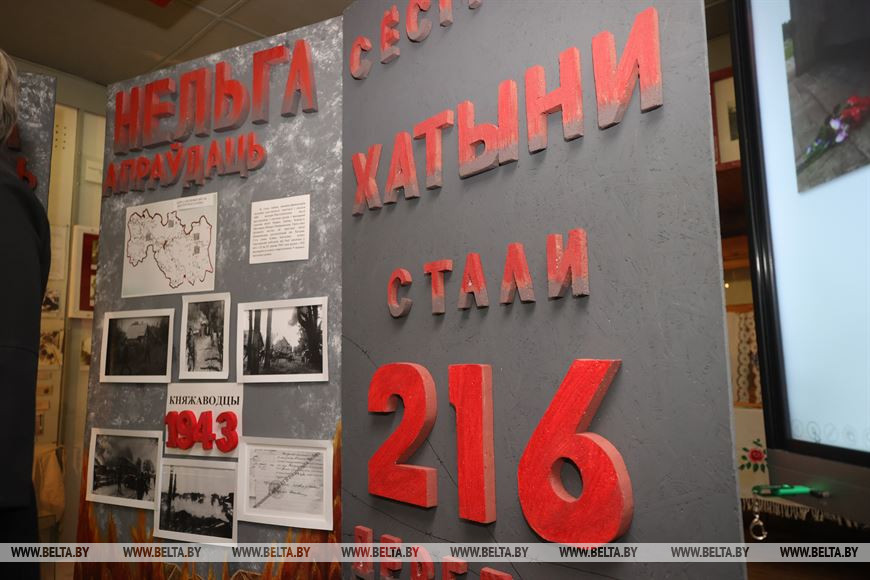
Another element of the Khatyn complex is The Tree of Life that lists, in alphabetical order, the names of 433 Belarusian villages that were burned down by the occupants along with their inhabitants but that were rebuilt after the war. The Wall of Memory features the plates with the names of 260 death camps and places where fascists massacred people in Belarus. The Eternal Flame burns in memory of the victims.
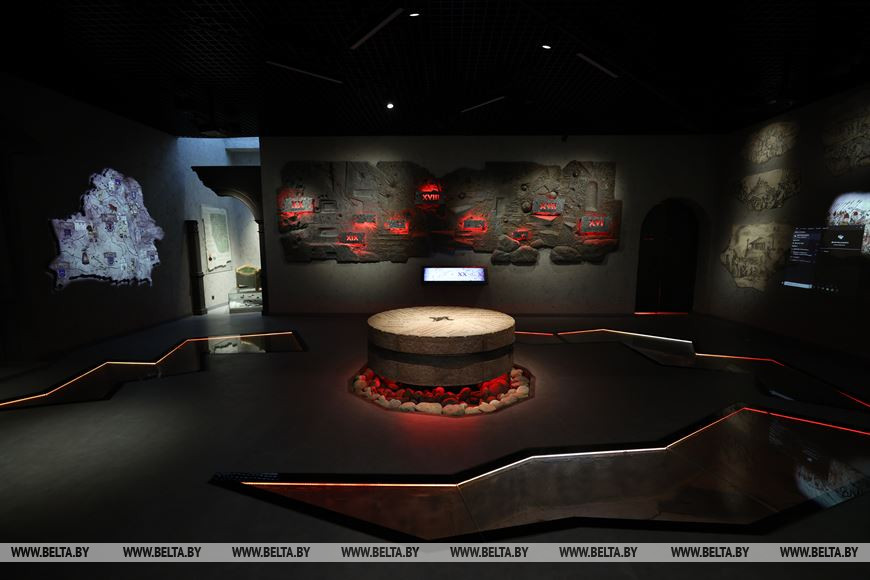
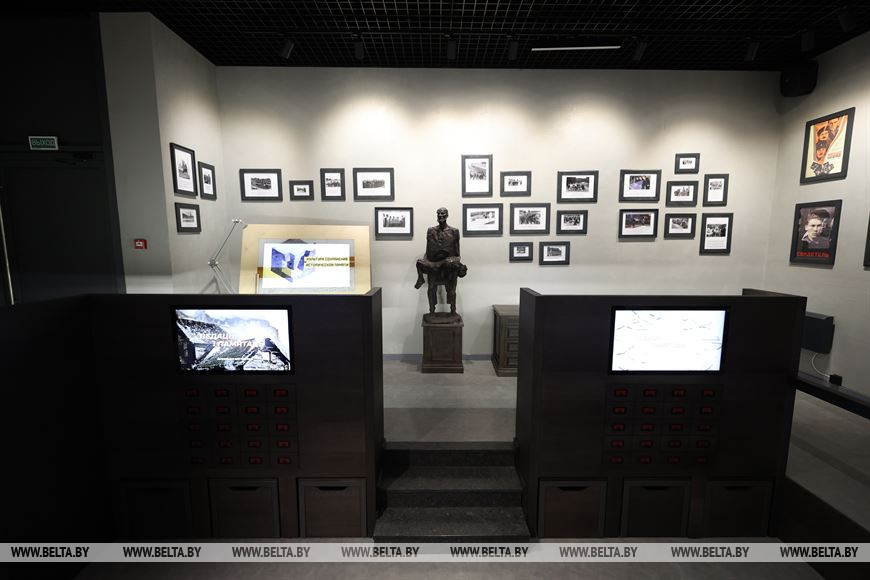
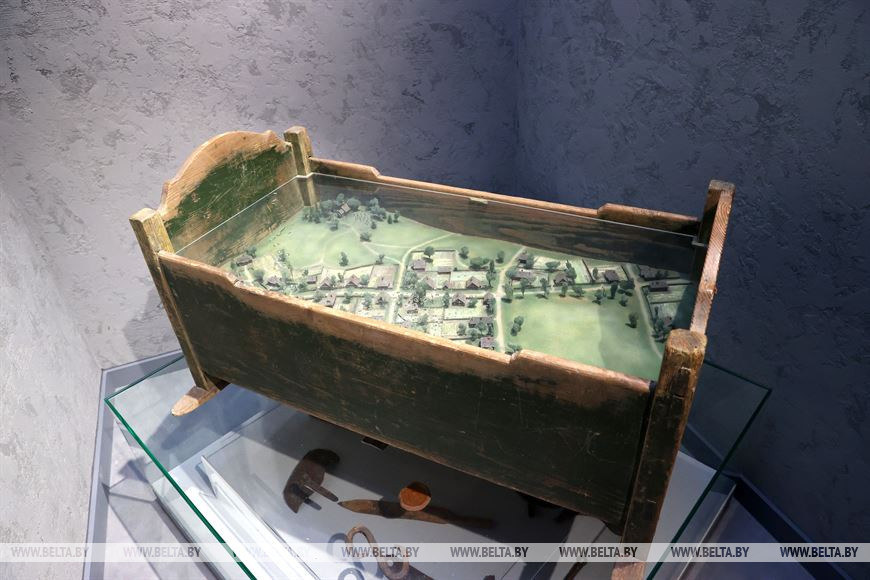
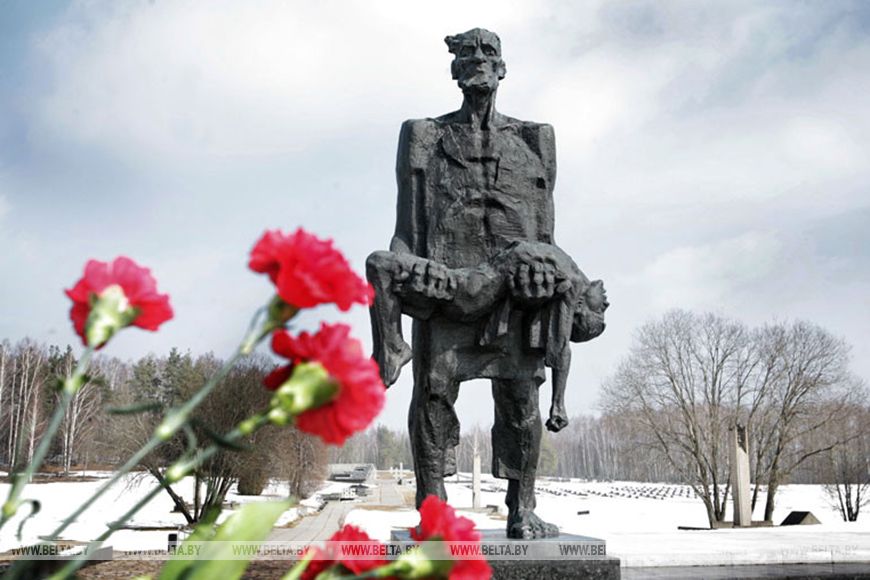
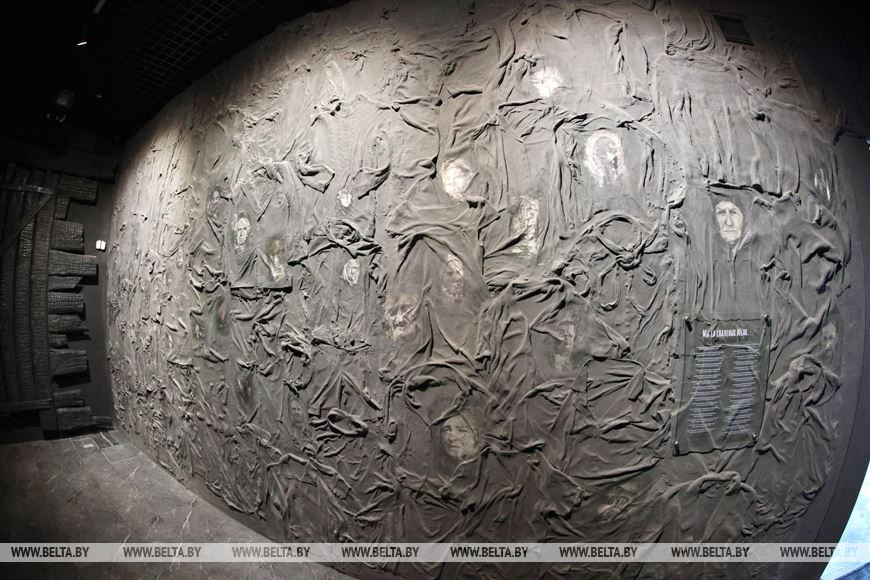
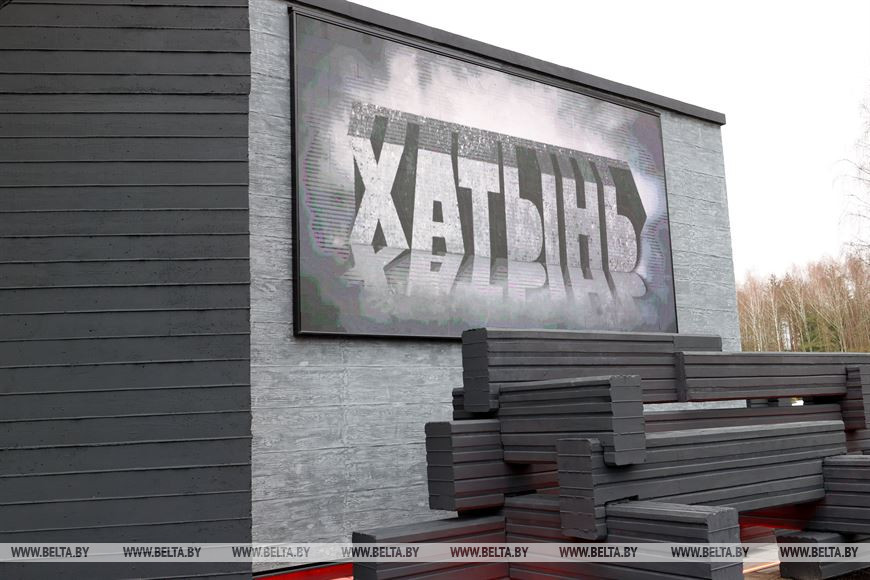
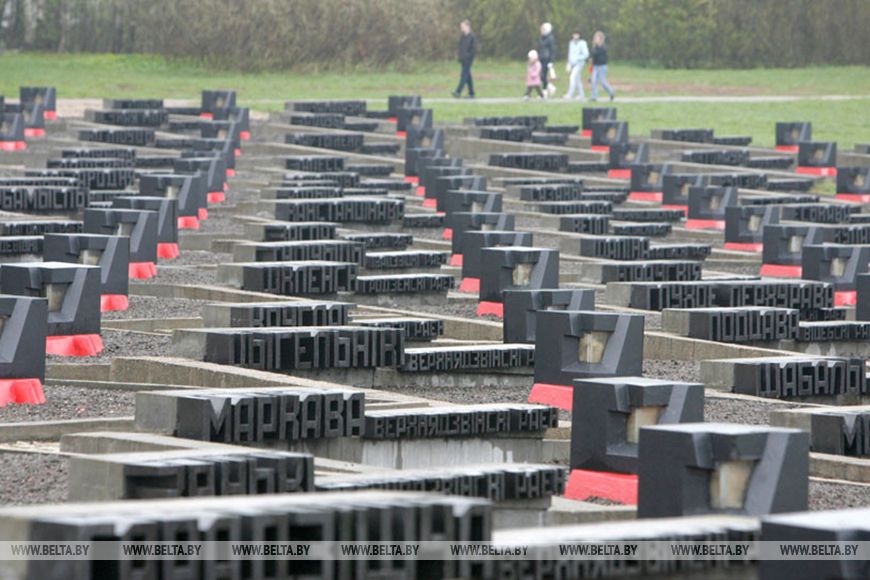
On 22 March 1943 the Nazi units entered the village and drove its inhabitants from their houses and into a shed, which was then covered with straw and set on fire. The trapped people managed to break down the front doors, but in trying to escape, were killed by machine gun fire. 149 people, including 75 children under 16 were killed. The village was then looted and burned to the ground.


















A memorial complex Khatyn was built on the site of the village to commemorate the victims. The decision to build the memorial was made in 1966. The grand opening ceremony was held on 5 July 1969. Thematically, the Khatyn memorial consists of several parts, but has a single compositional center that repeats the layout of the former village. In the center there is a bronze sculpture Unconquered Man. Next to it there is the symbolic roof of the barn in which people were burned alive. On the mass grave there is The Crown of Memory. On the site of each of the 26 burned houses there is a log monument with an obelisk in the form of a chimney with a memorial plaque listing the names of the residents of the house. The obelisks are topped with bells.
There is the world's only Cemetery of Villages: 185 urns with soil from the villages that were burnt together with their residents during the Great Patriotic War and never restored.

Another element of the Khatyn complex is The Tree of Life that lists, in alphabetical order, the names of 433 Belarusian villages that were burned down by the occupants along with their inhabitants but that were rebuilt after the war. The Wall of Memory features the plates with the names of 260 death camps and places where fascists massacred people in Belarus. The Eternal Flame burns in memory of the victims.
In 2004, ahead of the 60th anniversary of the liberation of Belarus from Nazi invaders, the state memorial complex Khatyn was renovated on the instruction of Belarusian President Aleksandr Lukashenko. The project was completed by 25 June 2004. The Church of the Nativity of the Blessed Virgin Mary, a replica of the church that stood here before, was consecrated on 18 March 2023. It was recreated thanks to the documents describing the Khatyn church from the late 18th century provided by the National Historical Archive. On 22 March 2023, on the day of the 80th anniversary of the Khatyn tragedy, the new museum of the war victims was opened in the memorial complex.


The Khatyn Memorial Complex drew more than 500,000 visitors in 2023. The tragedy of Khatyn was not a random episode of war, but one of thousands of facts testifying to the targeted policy of genocide conducted by Hitler's Germany against the population of Belarus. Belarus launched the trial of Vladimir Katryuk, known as the executioner of Khatyn, on 8 February 2024. In the autumn of 1941, he voluntarily joined Ukrainian nationalist units, and then (no later than January 1943) became a member of an armed organized criminal group - the 118th battalion of the security police. Together with other executors, he, being the commander of the unit, worked on the Nazi common goal of destroying the Belarusian nation by killing people, depriving them of housing, clothing and food. Vladimir Katryuk managed to escape punishment and lived in Canada until his death. On 18 March 2024 the Supreme Court of Belarus found Vladimir Katryuk guilty of committing genocide, i.e. a crime under Article 127 of the Criminal Code. He was convicted without punishment. It became the first such trial in the history of Belarusian justice. According to Deputy Prosecutor General Aleksei Stuk, this step was important for preserving the memory of the feat and sacrifices of the Belarusian people during the Great Patriotic War, restoring historical justice and ensuring the principle of inevitability of punishment. He emphasized that this was the first court decision, but not the last one. In the near future, other cases of this category will be sent to the courts of Belarus.

The Khatyn Memorial Complex is on the State List of Historical and Cultural Heritage. People from different countries come here to pay tribute to the memory of all the Belarusians, who died in the flames of the war. Khatyn will forever remain a terrible symbol of thousands of Belarusian villages destroyed during the Great Patriotic War. The bells of Khatyn are a memory and a warning to the whole world that such a disaster must never repeat itself.








